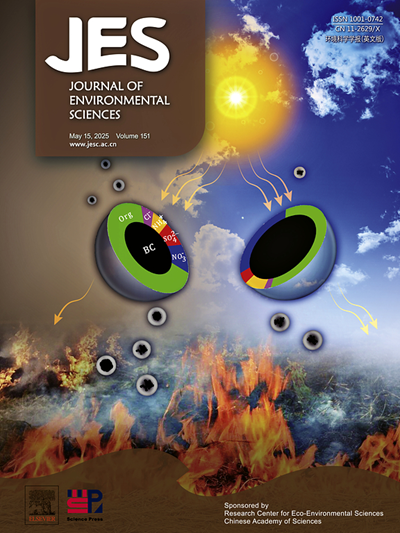Mechanism of nano-plastics induced inflammation injury in vascular endothelial cells
IF 5.9
2区 环境科学与生态学
Q1 ENVIRONMENTAL SCIENCES
引用次数: 0
Abstract
Nano-plastics, emerging pollutants in the environment, have raised global concern due to their widespread presence in daily life and the potential toxicity to human health. Upon entering human body, nano-plastics can readily interact with vascular endothelial cells within the bloodstream, potentially leading to endothelial dysfunction. However, our understanding of the toxic impact of nano-plastics on vascular endothelial cells remains insufficient, and the underlying mechanism are yet to be elucidated. This study investigated the toxicological effects of nano-plastics on EA.hy 926 endothelial cells. Exposure to different types of nano-plastics such as polystyrene (PS), amino-modified PS or carboxyl-modified PS, resulted in suppress cell activity, damage to the cell membrane, oxidative stress and significantly inhibit cell migration. RNA sequencing (RNA-seq) and small RNA-seq analyses revealed that numbers of genes and miRNAs were differentially expressed after nano-plastics treatment. CEBPB, a gene within the inflammation-related tumor necrosis factor signaling pathway, was confirmed to be a target of miR-1908-5p, indicating that nano-plastics induced activation of CEBPB might promote inflammatory injury to vascular endothelial cells. These results enhance our understanding of the biological effects of nano-plastics and their potential impact on inflammation injury.
纳米塑料诱导血管内皮细胞炎症损伤的机制
纳米塑料作为一种新兴的环境污染物,由于其在日常生活中的广泛存在和对人体健康的潜在毒性,引起了全球的关注。纳米塑料进入人体后,极易与血液中的血管内皮细胞相互作用,可能导致血管内皮功能障碍。然而,我们对纳米塑料对血管内皮细胞的毒性影响的了解仍然不足,其潜在的机制尚未阐明。研究了纳米塑料对内皮细胞的毒理学作用。暴露于聚苯乙烯(PS)、氨基改性PS或羧基改性PS等不同类型的纳米塑料中,会导致细胞活性抑制、细胞膜损伤、氧化应激和细胞迁移明显抑制。RNA测序(RNA-seq)和小RNA-seq分析显示,纳米塑料处理后基因和mirna的表达数量存在差异。CEBPB是炎症相关肿瘤坏死因子信号通路中的一个基因,被证实是miR-1908-5p的靶标,提示纳米塑料诱导的CEBPB活化可能促进血管内皮细胞的炎症损伤。这些结果增强了我们对纳米塑料的生物学效应及其对炎症损伤的潜在影响的理解。
本文章由计算机程序翻译,如有差异,请以英文原文为准。
求助全文
约1分钟内获得全文
求助全文
来源期刊

Journal of Environmental Sciences-china
环境科学-环境科学
CiteScore
13.70
自引率
0.00%
发文量
6354
审稿时长
2.6 months
期刊介绍:
The Journal of Environmental Sciences is an international journal started in 1989. The journal is devoted to publish original, peer-reviewed research papers on main aspects of environmental sciences, such as environmental chemistry, environmental biology, ecology, geosciences and environmental physics. Appropriate subjects include basic and applied research on atmospheric, terrestrial and aquatic environments, pollution control and abatement technology, conservation of natural resources, environmental health and toxicology. Announcements of international environmental science meetings and other recent information are also included.
 求助内容:
求助内容: 应助结果提醒方式:
应助结果提醒方式:


